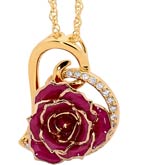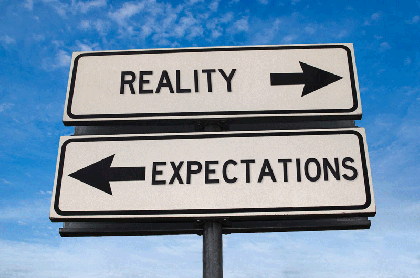Stop Hoping for Change in your partner
When you find yourself stuck in an unhealthy relationship, harboring hope that your partner will change during fleeting moments of harmony and bliss can be a trap. Fixating on the possibility of improvements while ignoring the turbulent periods often leads to a harmful cycle that can endure for years.
In healthy relationships, there are natural fluctuations of harmony, disruption, and resolution. Continuous harmony is rare, even in strong relationships. In fact, conflict exists up to 70% of the time in healthy relationships, but these are resolved with constructive problem-solving, which ultimately strengthens trust in the relationship.
The Unhealthy Relationship Cycle
In the early stages of most relationships, both partners typically present their most agreeable sides. During this phase of mutual discovery, feelings deepen, and commitment grows. Surprisingly, data from over a thousand individuals' dating experiences indicate minimal conflict until they enter the committed phase of their relationship. This lack of conflict can create the illusion of a perfect match. However, over time, issues inevitably surface, and couples who lack the tools to address these ruptures find themselves navigating turbulent waters.
Some of the unexpected issues that often emerge in unhealthy relationships include situations where one partner consistently:
1. Shifts blame onto their partner rather than taking responsibility, turning issues into their partner’s character flaws or deficiencies.
2. Uses emotional withdrawal as a means of punishing their partner for perceived hurts.
3. Appears to take ownership of the problem but ultimately holds their partner responsible for the issue.
4. Claims superiority and expects the final say, demanding agreement or silence from their partner.
When one partner consistently adopts any of the above approaches, the hopeful partner, despite lingering unease, welcomes the return to a familiar, positive connection and often gives in to the destructive approach, providing temporary relief. However, it's only a matter of time before another issue disrupts the calm.
The Deceptive Nature of Harmony
In this relationship cycle, the moments of "harmony" following disruptions serve as superficial "repairs" that foster false hope for change. These sporadic positive experiences create a powerful illusion, leading to denial of the underlying problems.
Embracing Conflict
Many individuals wonder how to avoid these problematic behaviors when seeking a partner. The key is to embrace conflict. During the dating phase, it is crucial to be authentic, express your desires and expectations, and engage in healthy disagreements. It is never healthy to be the one who always gives in or never communicates their needs. Conflict, when handled well, can provide insights into a potential partner's ability to resolve problems.
Thriving relationships experience periods of disruption when conflicts arise, and both partners feel safe being themselves, communicating their needs, and knowing the other will listen and work together. True repair leads to a deeper and more trusting connection in the relationship.
Letting Go of Hope for Change
If you find yourself stuck in a relationship where problem resolution lacks balance, it's crucial to consider strategies for breaking free and regaining control over your life. Here are practical steps to help you disentangle from a relationship that no longer serves your well-being:
1. Self-Reflection
Begin by introspectively assessing the relationship, your happiness, and whether you are genuinely hopeful for change.
2. Seek Support
Reach out to trusted friends, family, or a therapist who can offer emotional support and guidance.
3. Set Boundaries
Establish clear boundaries, communicate your feelings and needs with your partner. Honest communication may lead to positive changes.
4. Counseling or Therapy
Consider couples counseling or individual therapy to address relationship issues with professional guidance.
5. Weigh the Pros and Cons
Objectively evaluate the relationship, considering both positive and negative aspects.
6. Legal Matters
If the relationship involves legal or financial entanglements, consult with a lawyer to understand your rights and responsibilities.
7. Plan for Independence
Start planning for your independence, which may involve finding a new place to live, securing financial stability, and building a support network.
8. Be Prepared for Change
Breaking free from a long-standing relationship can be emotionally challenging. Seek professional help or support as needed.
9. Prioritize Self-Care
Focus on self-care as you navigate this transition. Engage in activities that bring you joy, practice mindfulness, and prioritize your well-being.
10. Follow Through
Once you've decided to end the relationship, remain resolute in your actions and carry out your plans, seeking guidance from professionals, friends, or support groups if necessary.
Conclusion
Breaking free from a stagnant or abusive relationship can be a difficult journey, but it is often essential for personal growth and well-being. Remember that you deserve a healthy, fulfilling, and mutually respectful relationship.
By taking these steps and seeking the right support, you can regain control over your life and move toward a brighter future.



















